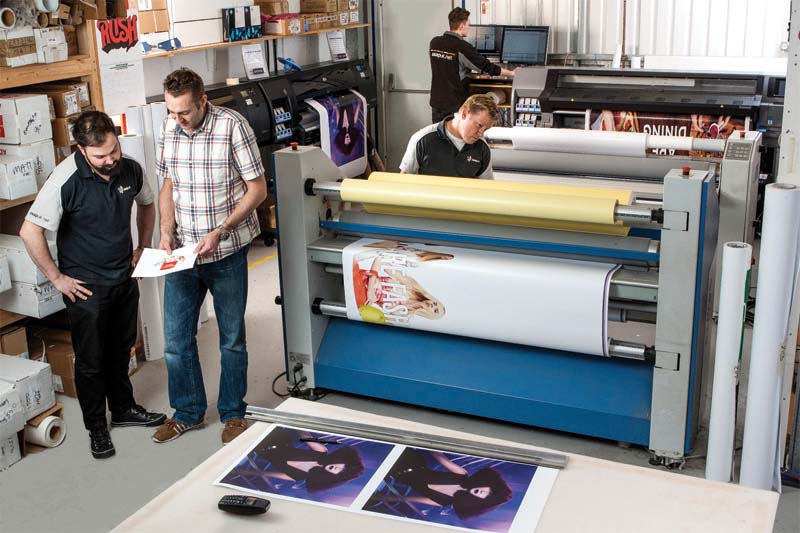By Allison Lundy
Successful business owners, including those in the wide-format printing industry, know safety is a key component in creating a thriving work environment. By keeping their employees healthy, business owners can save money, improve morale and foster a more efficient workplace.
Of course, safety is a matter not just of good business practices, but also of laws and regulations, of which there are a variety throughout Canada that impose certain standards on all work facilities. Keeping track of these rules can become overwhelming.
Fortunately, there are ample resources available to help wide-format printing businesses navigate health and safety issues.
From general to specific
Safety standards can cover quite a few areas. Some are more general, like criteria for facility conditions, how to deal with violence and harassment in the workplace or emergency response plans. Among the most common workplace injuries are slips, falls and overexertion.
In wide-format printing, there are also a number of industry-specific hazards that need to be dealt with every day. Many print service providers (PSPs) work with chemicals that may be considered dangerous, for example, so steps need to be taken to mitigate the associated risks, such as labelling containers or wearing personal protective equipment (PPE). Employees may also need to frequently operate equipment that would be dangerous if the appropriate machine guards were not in place.
The cost of violations
Following all of the various regulations that can affect the printing industry is a challenging task. For small businesses that do not have enough time or resources to keep up-to-date in implementing them, the task can even seem impossible.
It is essential not to let safety concerns fall to the wayside, however, or there could be significant costs. When safety violations are identified and investigated, businesses are typically fined, either by their provincial safety agency or by the Canadian Centre for Occupational Health and Safety (CCOHS) at the federal level. In the most serious cases, these fines can range from approximately $10,000 to $300,000 or even greater.
Health and safety measures should not only be motivated by a fear of financial punishment. As mentioned earlier, violations can compromise the operational efficiency of a business. Further, employees thrive in environments where they feel safe. In part, this is because they actively appreciate when they feel their company cares about them.
In businesses where there have been many injuries and illnesses, not only do the affected employees often miss work while they are recovering, but employee morale also tends to become much lower, which in turn results in even lower productivity. Keeping a business safe and up to standards, on the other hand, will naturally lead to improvements in productivity and overall employee happiness.







